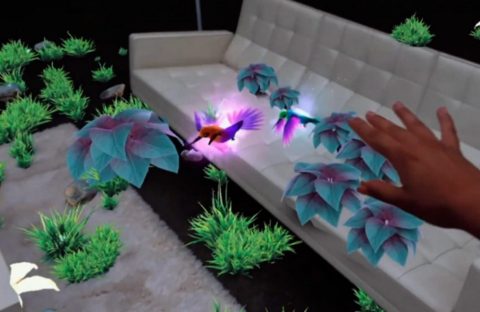LiDAR has Potential to Help Consumers be More Socially Connected and More Creative in Augmented and Virtual Worlds
Strategy Analytics – LiDAR has been used for many years in automotive, scientific and archaeological applications, but has more recently been found in consumer electronics such as smart vacuums, drones, and VR headsets. Providing the ability to accurately map objects and their distances, many benefits of this technology can be applied to the augmented reality (AR) space. The creation of richer contextually-aware AR experiences, which can be created more accurately and quickly by the end-user of their own environment, will dramatically enhance the user experience of many future use cases.
A new report from the User Experience Strategies service at Strategy Analytics, “Use Cases for LiDAR in Personal Devices” investigates the use of LiDAR scanners in smartphones and possible future use cases in areas such as eCommerce, creativity, gaming, accessibility and tourism in AR and VR applications.
Commented Lisa Cooper, report author and Director, UX Innovation Practice, “For the last few years smartphone manufacturers have been using Time-Of-Flight (ToF) sensors to enhance camera features and promote accuracy, speed and focus of images and videos. This has also improved AR capabilities and facial recognition systems. But the inclusion of LiDAR technology in smartphones to replace traditional ToF sensors will have a profound effect on AR user experiences – particularly depth mapping for the camera, enhancing social media engagement and making gaming more immersive.”
Continued Cooper, “Apple is the first manufacturer to include LiDAR technology in its devices – its latest iPhone 12 and iPad Pro 2020 series. While its exclusivity agreement with Sony prevents other manufacturers including LiDAR on their smartphones for now, other OEMs such as Samsung are actively seeking ways to enhance their ToF sensors to provide comparable experiences, which serves to further highlight the possibilities of this technology for consumers.”
Commented Kevin Nolan , VP, UX Innovation Practice,“LiDAR has the potential to help consumers be more socially connected and more creative in augmented and virtual worlds. Device manufacturers therefore have the responsibility to make LiDAR use cases more accessible and discoverable – not only for camera, social media and gaming features – but also in other use cases such as virtual education, eCommerce, and accessibility for the sight loss community. The current COVID-19 pandemic can only enhance the need for more immersive, ‘try before you buy’ and spatial awareness tool kits.”
Superbright announces a big update coming to In Death: Unchained on February 16th, 2021
